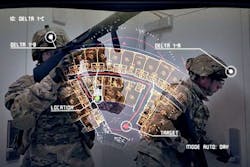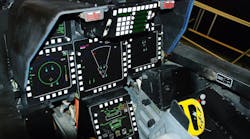Officials of the Army Contracting Command at the Aberdeen Proving Ground facilities at Fort Belvoir, Va., issued a sources-sought notice (W909MY-17-CMMDE) earlier this month for the Technologies for Complex, Multifaceted, Multi-Domain Environments project.
The Army Contracting Command is issuing this source-sought notice on behalf of the Army Communications-Electronics Research, Development and Engineering Center at Fort Belvoir.
Army researchers are interested in new technologies that sense enemy combatants operating in many different environments masks their presence, and allows freedom of maneuver.
The idea is to buy back the field of view lost from the physical, human, electromagnetic, and cyber clutter presented by today's complex battlefield environments, Army officials say.
Related: Electronic warfare to be part of all military operations
Future combat environments in urban areas will be extremely complex, have several different domains, short lines of sight, electromagnetic threats and obstacles,and many non-combatants, Army officials explain. Tactics like siege and mass destruction via artillery will not be acceptable in these conditions.
In an environment using today's weapons and tactics, adversaries can use complex urban terrain to negate standoff advantage. In addition, securing key military objectives in complex areas would be costly.
Instead, Army researchers are looking for new technologies that would enable small separated Army teams to act autonomously, as well as to outmaneuver and out-think the enemy in close combat.
These technologies would help deny adversaries urban terrain for cover and concealment by providing new capabilities for local intelligence, surveillance, and reconnaissance (ISR) through autonomous networked sensors, small-unit heads-up situation awareness, and enhanced fusion and targeting while operating in complex urban environments against a determined, adaptive enemy.
Related: Army chooses SRC to design and build counter-drone systems to destroy or disable enemy UAVs
Army officials envision tools that capitalize on enriched intelligence, machine learning, and augmented reality such as training, rehearsals, and continuous maneuver.
Army researchers particularly are interested in enabling technologies that would be mature and available for demonstration over the next five to ten years, and would provide an opportunity to offer significant military advantage by 2028.
Companies interested should email 10-page .PDF responses no later than 28 Aug. 2017 to Richard Nabors, deputy director of the Army CERDEC Associate for Strategic Planning at [email protected], with a copy to the Army's Arlene Wadkins at [email protected]. Include RFI number W909MY-17-CMMDE in the subject line. Email questions or concerns to Nabors and Wadkins at the above email addresses.
More information is online at https://www.fbo.gov/notices/29eea936e065e2896704df3bdcf76987.
Learn more: search the Aerospace & Defense Buyer's Guide for companies, new products, press releases, and videos



